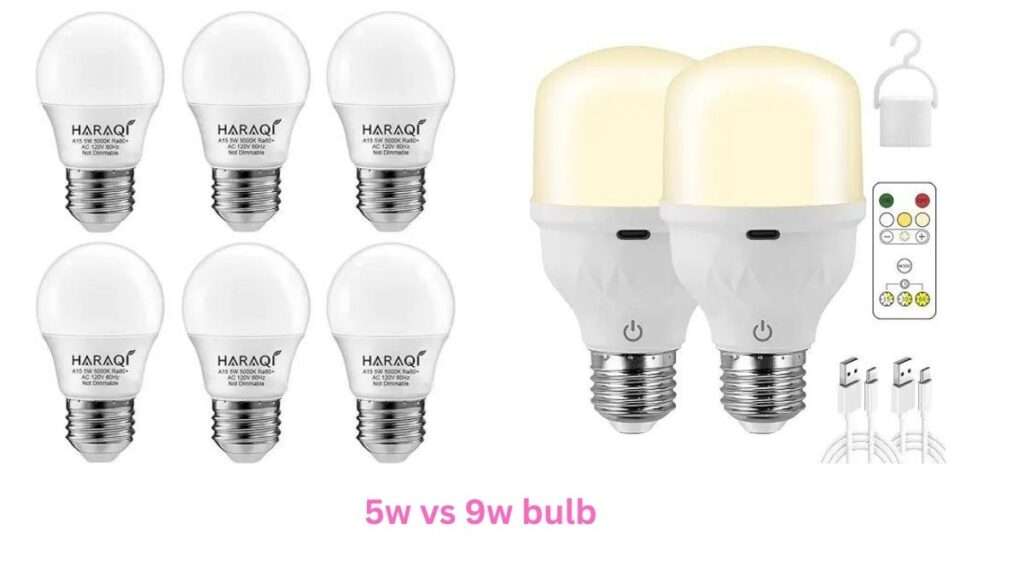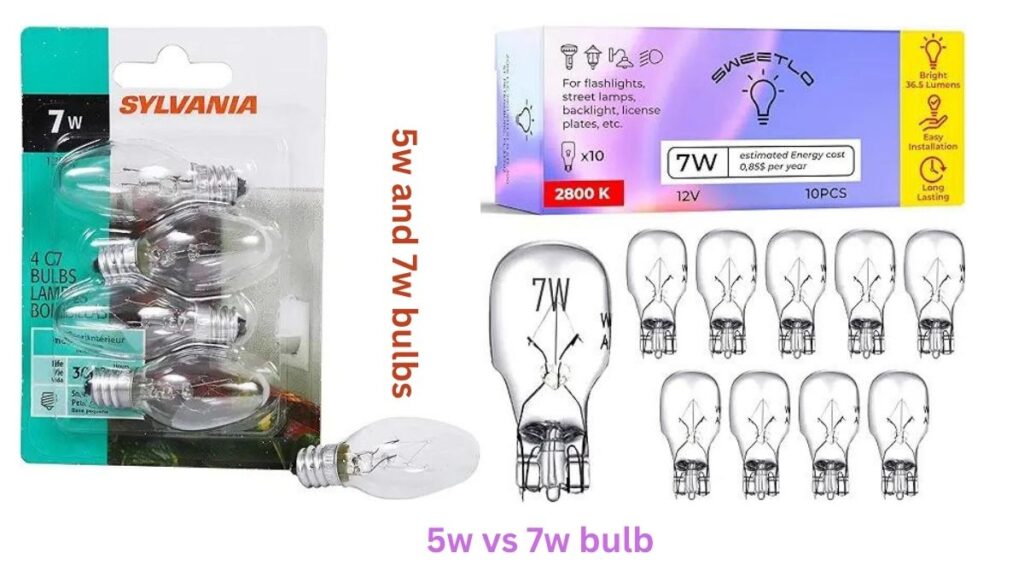Choosing the right light bulb seems like a small decision, but it can have a big impact on your energy consumption, comfort, and even mood. With the rise of LED technology, many people are switching to energy-efficient bulbs like 5W and 9W options. However, how can you determine which is ideal for you?
In this article, we’ll break down the differences between 5W and 9W bulbs, so you can decide which one fits your lighting needs perfectly. Whether you’re trying to save on electricity bills or simply want to improve the lighting in your home, let’s shed some light on the best choice for you!
Understanding Wattage in Modern Lighting
Wattage used to be a straightforward way of measuring a bulb’s brightness. The higher the watts, the brighter the light. But with LEDs, wattage tells us more about how much energy a bulb uses rather than how bright it is.
For example, a 5W LED bulb may give the same brightness as a 40W incandescent bulb. Thanks to LED technology, you get powerful lighting with much lower energy use, which is why wattage is now more about energy efficiency than brightness.
5W Bulbs: Features and Benefits
A 5W LED bulb may sound small, but don’t let the wattage fool you. Here’s why it might be just what you require:
- Brightness (Lumens): A typical 5W LED bulb produces around 400-500 lumens. That’s great for soft lighting in smaller spaces like bedside lamps or mood lighting.
- Energy Efficiency: These bulbs are incredibly efficient. They use just a fraction of the power that traditional bulbs do, making them ideal for areas where you need gentle light without wasting energy.
- Applications: 5W bulbs are perfect for cozy areas like bedrooms, reading nooks, or accent lighting. If you’re aiming for a relaxed and calming atmosphere, this is a great option.
Pros:
- Low energy use, leading to lower electricity bills.
- Long lifespan compared to traditional bulbs.
Cons:
- Larger rooms might not have enough light.
- Limited use in areas that need intense light.
9W Bulbs: Characteristics and Advantages
On the other hand, 9W LED bulbs are stronger and more suited for spaces where you need a brighter light.
- Brightness (Lumens): A 9W LED bulb generally offers about 800-900 lumens, which is close to the brightness of a 60W incandescent bulb. This makes it great for illuminating larger areas.
- Energy Consumption: Although it uses more energy than a 5W bulb, it’s still much more efficient than old incandescent bulbs, giving you brighter light with less power.
- Applications: 9W bulbs work well in living rooms, kitchens, or offices—places where you need more brightness for tasks or general lighting.

Pros:
- Higher brightness for larger spaces.
- Versatile use in various rooms and setups.
Cons:
- Slightly higher energy use than 5W bulbs.
- May be too bright for some settings, like cozy reading corners.
Comparing 5W vs 9W Bulbs: Key Factors
When deciding between 5W vs 9W, it comes down to your specific needs. Let’s look at the main factors to consider:
- Brightness Output: 5W bulbs typically produce about 400-500 lumens, while 9W bulbs offer 800-900 lumens. If you need a gentle, soft light, go for the 5W. For a brighter, more illuminating light, the 9W is the way to go.
- Energy Efficiency: Both bulbs are highly energy-efficient, but the 5W bulb will consume less power over time. If you’re looking to cut down on electricity use, especially in rooms where you don’t need intense light, the 5W may save you more in the long run.
- Heat Generation: LED bulbs produce very little heat compared to traditional bulbs. However, a 9W bulb might generate slightly more warmth than a 5W, but it’s still far cooler than incandescent lights.
- Color Temperature: Both wattages come in various color temperatures, from warm white to cool daylight. Choose a warmer temperature (around 2700K) for cozy spaces and a cooler one (5000K or above) for work areas.
Making the Right Choice: 5W vs 9W?
Choosing between 5W and 9W bulbs depends on several factors:
- Room Size: Larger rooms or workspaces benefit from 9W bulbs for more brightness. For smaller, intimate spaces like bedrooms or hallways, 5W is often enough.
- Energy Goals: If reducing your energy consumption is a priority, and you don’t need high brightness, the 5W bulb is your friend.
- Long-Term Savings: While 9W bulbs consume more power, they may prevent you from needing to buy multiple smaller bulbs for bigger rooms, which could balance out costs.
- Fixture Compatibility: Make sure your fixture or dimmer switch is compatible with your chosen bulb, whether it’s 5W vs 9W.

Environmental Impact: 5W vs 9W Bulbs
LED bulbs are champions of eco-friendliness. Compared to traditional incandescent bulbs, both 5W and 9W bulbs reduce carbon emissions and use far less energy.
- Carbon Footprint: Both wattages significantly cut down on carbon footprints compared to older technology, with 5W bulbs being the slightly greener option due to lower energy use.
- Recycling: LED bulbs, including 5W and 9W models, are easier to recycle and contain fewer hazardous materials, making them a safer choice for the environment.
Conclusion
In the end, whether you choose a 5W or a 9W bulb depends on your specific lighting needs. The 5W bulb offers gentle, energy-saving light, perfect for smaller rooms or mood lighting. The 9W bulb, on the other hand, provides powerful brightness suitable for larger spaces or task lighting.
Both options are leaps and bounds ahead of traditional lighting in terms of energy efficiency and lifespan. The choice ultimately boils down to the type of atmosphere you want to create and how much light you need. So, whether you’re going for cozy ambiance or bright, vibrant lighting, you can’t go wrong with either option—both are efficient, eco-friendly, and cost-effective in the long run!
Your perfect lighting solution is just a bulb switch away.
Related articles:
Hi, I’m Malik Suhail—an SEO expert, web designer, and passionate blogger with 2 years of experience. I specialize in crafting content that is not only informative but also tailored to meet the needs of my readers.
I write about diverse topics, always striving to simplify complex ideas and provide valuable insights that resonate with my audience. Whether it’s about SEO strategies, web design trends, or blogging tips, I am committed to delivering well-researched, practical, and easy-to-understand information.
My mission is to help readers navigate the digital world with confidence and clarity. I believe in adding value through authentic content that inspires action and delivers results.


